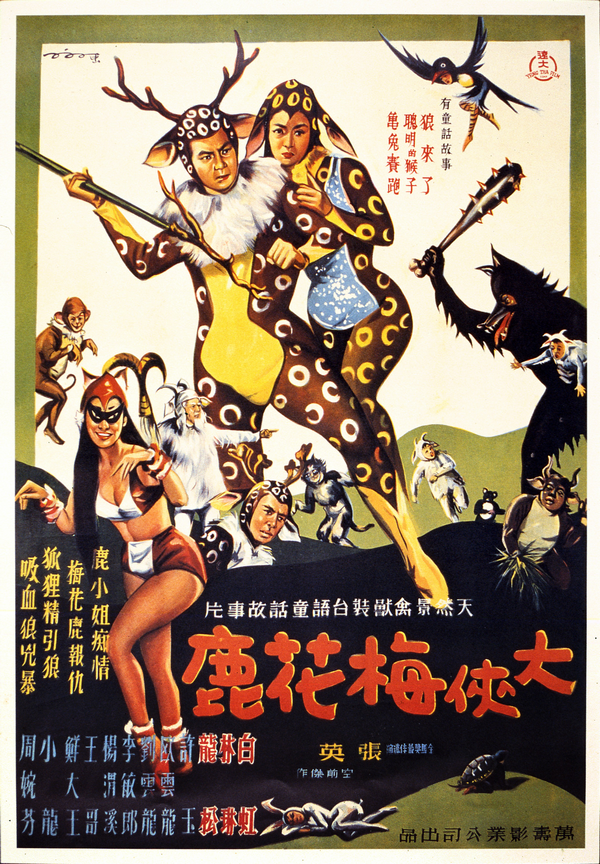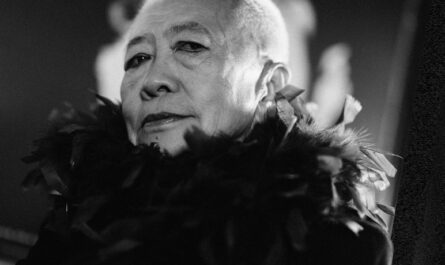Happy to say that a great project by Professor Chris Berry (King’s College London) and Dr Ming-yeh T. Rawnsley (Centre of Taiwan Studies, SOAS) is underway:
Did you know regular filmmaking on Taiwan only started in the 1950s? With a Taiwanese-language film industry? Between then and the 70s, 1,000-plus Taiwanese-language features were made. However, the budgets were miniscule, the companies short-lived, and there was no archive. They were quickly forgotten, and only 200-plus survive.
But now Taiwan’s lost commercial cinema is being recovered and restored by the Taiwan Film Institute. The project brings 7 scholars together for a symposium at King’s College London on 7 October 2017, launching a screening tour across the UK and Europe featuring 10 films.
Taiwanese-Language Cinema: A Short Introduction (source Taiyupian Website)
What Is Taiwanese-Language Cinema?
“Taiwanese-Language Cinema” refers to a cycle of at least 1,114 dramatic feature films made between 1955 and 1979 on the island of Taiwan in the local variety of the Minnanhua Chinese spoken language most commonly spoken there, also known as “Taiwanese.” It was not a genre, but an industry in its own right, and it produced films in a wide range of genres. These films were made by privately-owned companies. Most were small and many were short-lived. However, a core group of filmmakers and actors worked for these companies, and some individuals made over 100 films each during the Taiwanese-language cinema era. By 1959, annual production had reached over 60 films. After a dip marking the end of the first wave, production climbed to new heights in the 1960s, averaging around 100 films a year for most of the decade. The early 1970s saw a rapid decline, with only one film produced in 1974 and again in 1979, and none at all between those years.
Why Is It Called “Taiwanese-Language Cinema”?
The equivalent term in Mandarin Chinese is “taiyupian” (台語片), with “pian” meaning “films” rather than “cinema” (dianying/電影). “Taiyu” is often translated as “Taiwanese-dialect.” Whether to translate it as “Taiwanese-language” or “Taiwanese-dialect” is a complicated and fraught question. As a spoken language, Taiwanese and Mandarin Chinese are mutually unintelligible. If a dialect is considered to be a variation on a spoken language, then Taiwanese cannot be seen as a dialect of Mandarin. It is on this basis that we use the term “Taiwanese language” on this website. However, Taiwan’s status as a political entity complicates the issue. From this political angle, nation-states have languages, whereas regions of nation-states have dialects. During the Chiang Kai-shek era, the Kuomintang government not only saw itself as the legitimate government of the whole of China, but also included Taiwan in that larger nation-state. On that basis, it declared Mandarin to the be the “national language” (Guoyu/國語), and so the distinction between Taiwanese and Mandarin is commonly spoken of as the distinction between taiyu and guoyu on the island. Furthermore, the government of the People’s Republic remains vehemently opposed to any recognition of Taiwan as a nation-state.
What Are the Origins of Taiwanese-Language Cinema?
Taiwanese-language cinema marks the beginnings of sustained and regular feature film production on Taiwan. Taiwan was a Japanese colony from 1985 to 1945. During this era, it was a market, and sometimes a shooting location for Japanese films, but not a site of sustained production in its own right. Feature films were imported from Shanghai and Hollywood, as well as Japan, until war broke out. Only after the Kuomintang lost their civil war with Mao Zedong’s Communists and retreated from the mainland to establish their “temporary capital” in Taipei in 1949 were filmmaking facilities established on the island. However, the Kuomintang’s main priority was documentaries and newsreels, in an effort to communicate their policy to the island’s inhabitants. Furthermore, the majority of the island’s inhabitants could not understand Mandarin, and so early Mandarin-language features did not thrive at the box office. Meanwhile, a minor industry had developed in Hong Kong producing so-called “Amoy dialect” films, many featuring opera performers. Amoy is another name for Xiamen, a city in Fujian Province just across the Taiwan Straits, and the Amoy dialect is a form of Minnanhua very like Taiwanese. When these films were imported into Taiwan, they were very successful, because local audiences could watch films without translation for the first time. Inspired and threatened by this success, local opera entrepreneurs got the idea to fight back with Taiwanese-language films. The first privately produced Taiwanese-language film is usually recognized by scholars as Six Talents’ Romance of the Western Chamber (六才子西厢記), directed by Shao Luohui (邵羅輝) in 1955. But the first major box office hit was Xue Pinggui and Wang Baochuan (薛平貴與王寶釧), a film directed in 1956 by He Jiming (何基明) and based on a local gezaixi//koa-á-hì (歌仔戲) opera. As a result, many date the beginning of the Taiwanese-language cinema to 1956, when the success of Xue Pinggui and Wang Baochuan triggered a spate of Taiwanese-language opera films.
What Was the First Wave of Taiwanese-Language Cinema?
The first wave of Taiwanese-language cinema occurred in the late 1950s. The stage provided both the sources for most of the films and the actors and entrepreneurs who made them. As well as local Taiwanese-language opera films, plays that came out of the Taiwan New Drama movement were also adapted. The latter originated during the Japanese colonial era and drew on its Japanese counterpart, but emphasized contemporary stories performed in Taiwanese. Some of the key characteristics of the Taiwanese-language cinema asserted themselves early. The films were very popular, but budgets and production standards were low, with each film shot and edited within a few weeks. Because production was box office driven, despite the proliferation of companies and the growth in the number of films produced, a small number of tried and trusted filmmakers and popular stars dominated the industry. Very few films from this era survive and the only film from the first wave in our screening selection is Brother Wang and Brother Liu Tour Taiwan. Produced at the end of the first wave, it was at the time a daring experiment with an original comedy script rather than a recording of a stage performance. Its success helped to change the direction of Taiwanese-language cinema.
What Was the Second Wave of Taiwanese-Language Cinema?
During the Japanese colonial era, Taiwanese audiences had become accustomed to Japanese culture. In its efforts to Sinicize the population, the Kuomintang government was eager to restrict imports of Japanese cultural products. On the other hand, it was eager to maintain good relations with Japan, especially as the Cold War became entrenched and the Japanese economic miracle made it a potential source of investment. This contradiction resulted in an uneven policy on Japanese film imports. When initial restrictions were relaxed at the end of the 1950s, Taiwanese-language films were hit hard at the box office. When they were re-imposed a couple of years later, they took off again and established themselves strongly enough to resist the next relaxation. In this more stable environment, Taiwanese-language filmmakers began to export to areas of Southeast Asia where there were Minnanhua-speaking Chinese populations. The early tendency to record stage productions died away and a range of genres appeared. They included espionage films like The Best Secret Agent, martial arts films like Vengeance of the Phoenix Sisters, and children’s films, like Fantasy of the Deer Warrior. The dominant genre was the melodrama, such as Early Train from Taipei and Return from Anping Harbor. The ongoing influence of Japanese culture is seen in many of these films, and extends to some elements of Japanese New Wave’s “cruel youth” trend, for example in Dangerous Youth. But Taiwanese-language film also looked further afield, as for example in the adaptation of Victoria Holt’s gothic novel Mistress of Mellyn into a Taiwanese setting in The Bride Who Has Returned from Hell. All these films are included in our series, as is the pop star vehicle, exemplified by Goodbye, Taipei. This genre appeared at the end of the cycle and carried over into the Mandarin films of the 1970s.
Why Did Taiwanese-Language Cinema Die?
A combination of factors doomed Taiwanese-language cinema. Mandarin-language cinema was well supported by the government and the government-owned Central Motion Picture Corporation, whereas the Taiwanese-language industry was private. The numerous small companies struggled to raise budgets, and one flop could put them out of business. As the Mandarin-language cinema got a foothold at the end of the 1960s, its films outshone their Taiwanese-language rivals. Furthermore, by this time, as a result of Mandarin-language school education, growing numbers of young people were able to watch Mandarin-language films without translation. Finally, television took off around this time. The audiences that once went to see Taiwanese-language melodramas in the movie theatre were getting older and more inclined to stay home to watch Taiwanese-language dramas on the small screen.
Why Was Taiwanese-Language Cinema Forgotten?
By the time of their demise, Taiwanese-language films were not valued highly by either local cinephiles or the government. The government was eager to promote the Mandarin language, which it proclaimed as the national language and made compulsory in schools and on public occasions. In its eyes, the disappearance of Taiwanese-language cinemas was evidence of the success of its policies. For local cinephiles, Taiwanese-language films were often seen as an embarrassment, because of their low production standards and tendency to take shortcuts. In an age before the establishment of the Chinese Taipei Film Archive in 1979, there was no depository that kept and cared for old films. Today, only 200+ of the 1114 titles produced have survived, a shockingly low rate of around 20%.
Why Is Taiwanese-Language Cinema Being Remembered?
The establishment of the archive in 1979 was part of a change in attitudes towards cinema as a whole. Where once it had been seen as only a disposable entertainment, it began to be revalued as an art form. Furthermore, with the growth of a nativist literature movement in the 1970s and a strong sense of local Taiwanese identity in contrast to the Kuomintang government efforts to encourage people to identify as Chinese, it is not surprising that the end of Martial Law in 1987 was quickly followed by publications on Taiwanese-language cinema. Some of the monographs that appeared are listed in the “further reading” list that you can download from this website. The arrival of DVD technology also led to the release of surviving popular Taiwanese-language films for the nostalgia market. When the Chinese Taipei Film Archive (now the Taiwan Film Institute) was tasked with restoration work, beginning in 2012, it included Taiwanese-language films in its programme from the beginning. Because those works have also been subtitled in Chinese and English, it is now possible to introduce them to audiences beyond Taiwanese-speaking populations.
Screening tour starts at King’s College London with these two films on 7 Oct 2017:
Fantasy of the Deer Warrior 大 俠 梅花鹿 and The Lost Kingdom 消失的王國: 拱樂社 and three films on 8 Oct 2017: The Best Secret Agent 天字第一號 , Early Train from Taipei 台北發的早車 , Brother Wang and Brother Liu Tour Taiwan 王哥柳哥遊台灣
Please follow the link to register .
A screening tour across the UK and Europe (Ljubljana,Vienna,Tübingen,Lund,Krakow,Helsinki,Lyon), featuring 10 films follows next months.
Get the latest info about the symposium and the tour at the project’s website Taiyupian and it’s facebook site .
Chris Berry
Chris Berry is Professor of Film Studies at King’s College London. In the 1980s, he worked for China Film Import and Export Corporation in Beijing, and his academic research is grounded in work on Chinese-language cinemas and other Chinese-language screen-based media. He is especially interested in national and transnational screen cultures in East Asia.
PhD, UCLA; Theater Arts (Film & TV). 1999. Dissertation title: “Towards a Postsocialist Cinema: The Representation of the Cultural Revolution in the Cinema of the People’s Republic of China, 1976-1981.” Chair: N.K. Browne.
MA, UCLA; Theater Arts (Film & TV). 1983. Thesis title: “The Game Show and Its Commercials in the Viewing Continuum.” Chair: K. Montgomery.
BA (Hons), Leeds University; Chinese Studies. 1981.
Previously Professor of Film & Television Studies at Goldsmiths, University of London (2004-2012); Associate Professor in Film Studies at the University of California, Berkeley (2000-2004); Lecturer at La Trobe (1990-2000) and Griffith (1988-1989) universities in Australia; and consultant at the China Foreign Languages Press (1987-1988) and China Film Corporation in Beijing (1985-1987).
Visiting Professorships: University of Washington Chinese Film Summer School, held at the Beijing Film Academy (2006, 2007, 2008, 2011); University of Hong Kong (2007); Fudan University, Shanghai (2006); Chinese University of Hong Kong (2006, 2017); Shanghai Jiaotong University (2012); and Korean National University of the Arts (1997, 1999).
Senior Research Fellow at Internationales Forschungszentrum Kulturwissenschaften, Vienna (2011).
King’s College London: Professor Chris Berry
Dr Ming-yeh T. Rawnsley
Dr Ming-yeh T. Rawnsley received her PhD (on the topic “Public Service Television in Taiwan”) from the Institute of Communications Studies (ICS), University of Leeds in 1998. Since then, she worked as a researcher at the University of Nottingham (1999–2005) and became Head of Chinese Studies at the University of Nottingham Ningbo China (UNNC, 2005–2007). Before Ming-yeh T. Rawnsley joined SOAS as Research Associate, she researched and taught East Asian film industries at the ICS, University of Leeds (2007–2013).
Ming-yeh T. Rawnsley was born and grew up in Taiwan. She received her BA degree from National Taiwan University and worked as a research assistant, journalist and television screenwriter before she went to the UK to pursue postgraduate studies. Her experiences of living in Taiwan, Hong Kong (2004), mainland China (2005–2007) and the UK have given her a unique intercultural perspective on the media, cinema, society and cultural representations of identities. Ming-yeh T. Rawnsley is fascinated by transdisciplinary collaborations and intend to develop projects that may exercise social impact.
SOAS University of London: Dr Ming-yeh T. Rawnsley




